Montech Metal DT24 Premium Review: Impressive Ryzen 7000 Performance

Montech PC is a relatively new company founded in 2016 based in Taiwan. But Montech’s parent brand, Telon, has been in the industry for nearly 30 years, so there’s no shortage of experience. Montech’s current lineup includes keyboards, power supplies, cases, fans and CPU coolers. Today we introduce the Metal DT24 Premium, a dual-tower air cooler with a retail price of $69.
cooler specs
| cooler | Montec Metal DT24 |
| Manufacturer’s suggested retail price | Premium version with ARGB cover $69.00 USD |
| Basic version without ARGB $57.00 USD | |
| Installation size | 133.6 (length) x 124 (width) x 158 mm (height) |
| Heat sink material | aluminum |
| heat pipe | 7x 6mm copper heat pipes |
| Socket compatibility | Intel: LGA1700, LGA1200, LGA1151, LGA1150, LGA1155, LGA2066, LGA2001, LGA2011-v3 |
| AMD: AM5 and AM4 | |
| base | Precision machined convex copper base |
| Maximum TDP (our test) | 214W with Intel i7-13700K |
Packing and contents
Montech’s Metal DT24 Premium comes in a medium-sized box that is slightly larger than other coolers in its class.
The inner contents are protected with molded foam and cardboard, and like the sample pictured above, the cooler arrives undamaged even if the mailman doesn’t handle the box carefully.
The package includes:
- Dual tower heatsink with ARGB cover
- Two 120mm metal PWM fans
- fan clip
- Mounts for all modern CPU sockets (including AM5 and LGA1700)
- thermal paste
- Installation guide
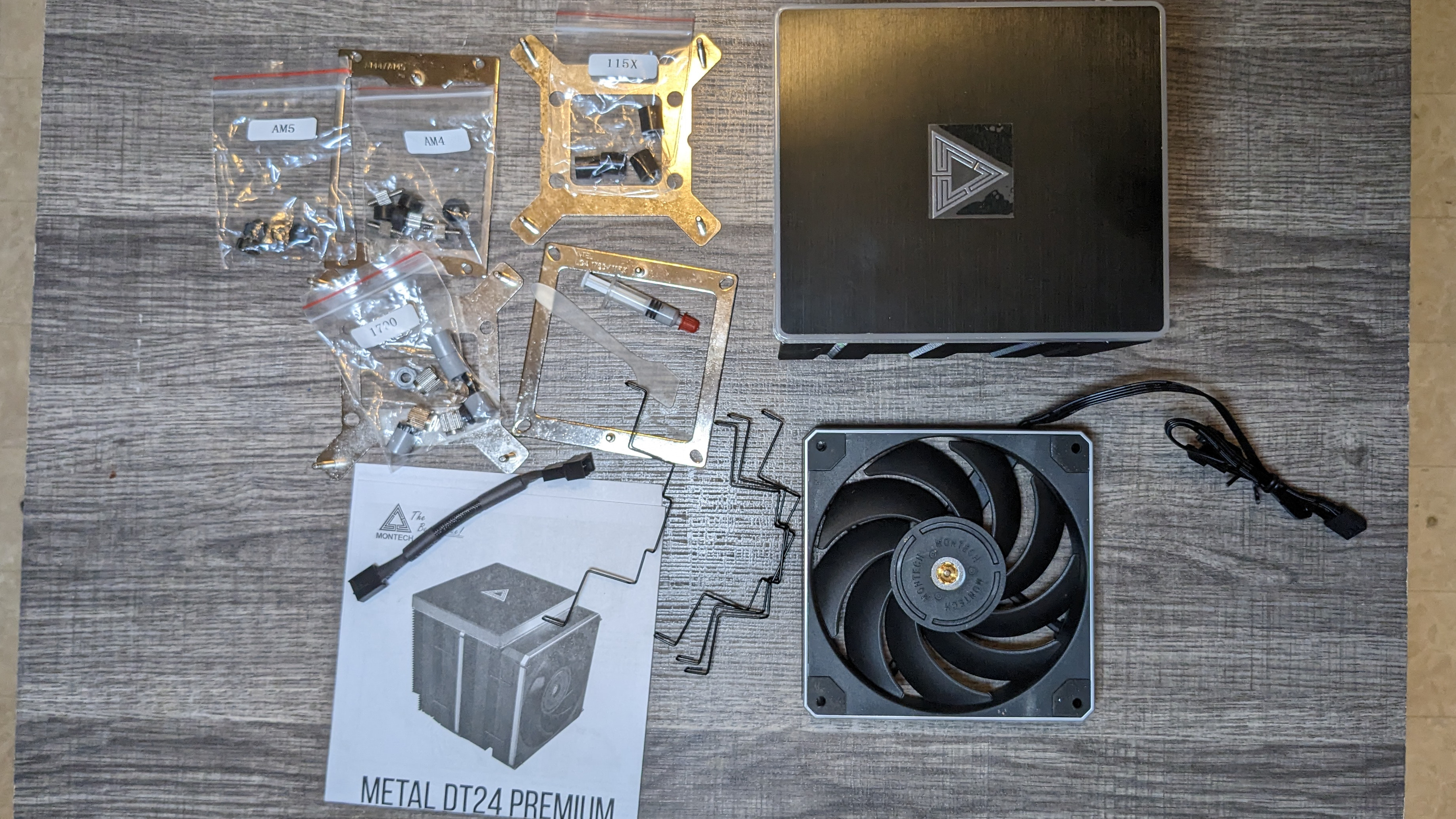
Unique delicate RGB design
Most of the coolers with RGB have RGB on both the body of the cooler and the fans, which are generally pretty flashy and reminiscent of raves. Montec has taken a more sober approach with the Metal DT24 Premium. Only the top edge of the cooler is lit, and by default the colors cycle slowly for a more subtle RBB effect.

44mm RAM compatibility
Montech Metal DT24 Premium works with most RAM kits on the market. It worked on systems with 45mm RAM, but due to the tight fit, we recommend using 44mm or less RAM.
Dual tower design with 6 copper heat pipes
Montech’s Metal DT24 features a traditional dual-tower design with six copper heat pipes and a unique fin design with a total heat dissipation surface area of over 8553 cm square. Either way, that’s what Montek claims. I didn’t have a high resolution laser scanner handy to check that number.
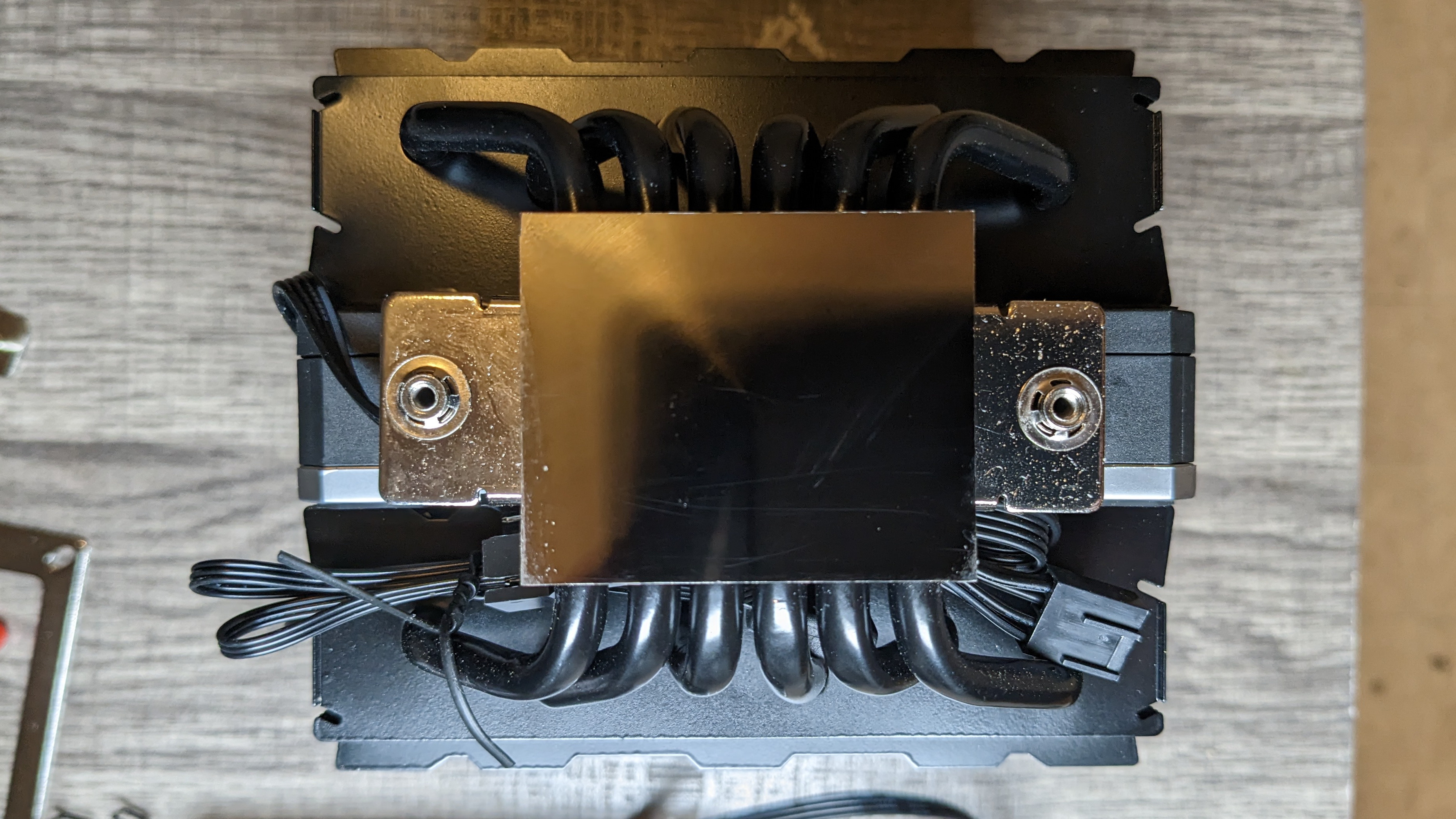
Two 120mm metal 120 PWM fans
Coolers are more than just heatsinks and radiators. Bundled fans have a big impact on cooling and noise levels. Montech’s Metal DT24 Premium includes his two of Montech’s latest Metal 120 PWM fans.
Montech touts these fans as having custom-made metal shells and bearings with a unique airfoil design for maximum airflow. The fan includes anti-vibration pads on both sides and before shipping he undergoes two dynamic balance tests to reduce vibration and ensure a low noise level.
Metal 120 PWM fans feature a new industrial-grade 6-pole motor that consumes less power than its predecessor. Montech touts its new “high-end” hydraulic bearing fans as giving him a “long life” of 40,000 hours, which he backs up with his three-year warranty. That may sound impressive, but many of our competitors’ fans are rated at 100,000-150,000 hours and usually come with a five-year or longer warranty.
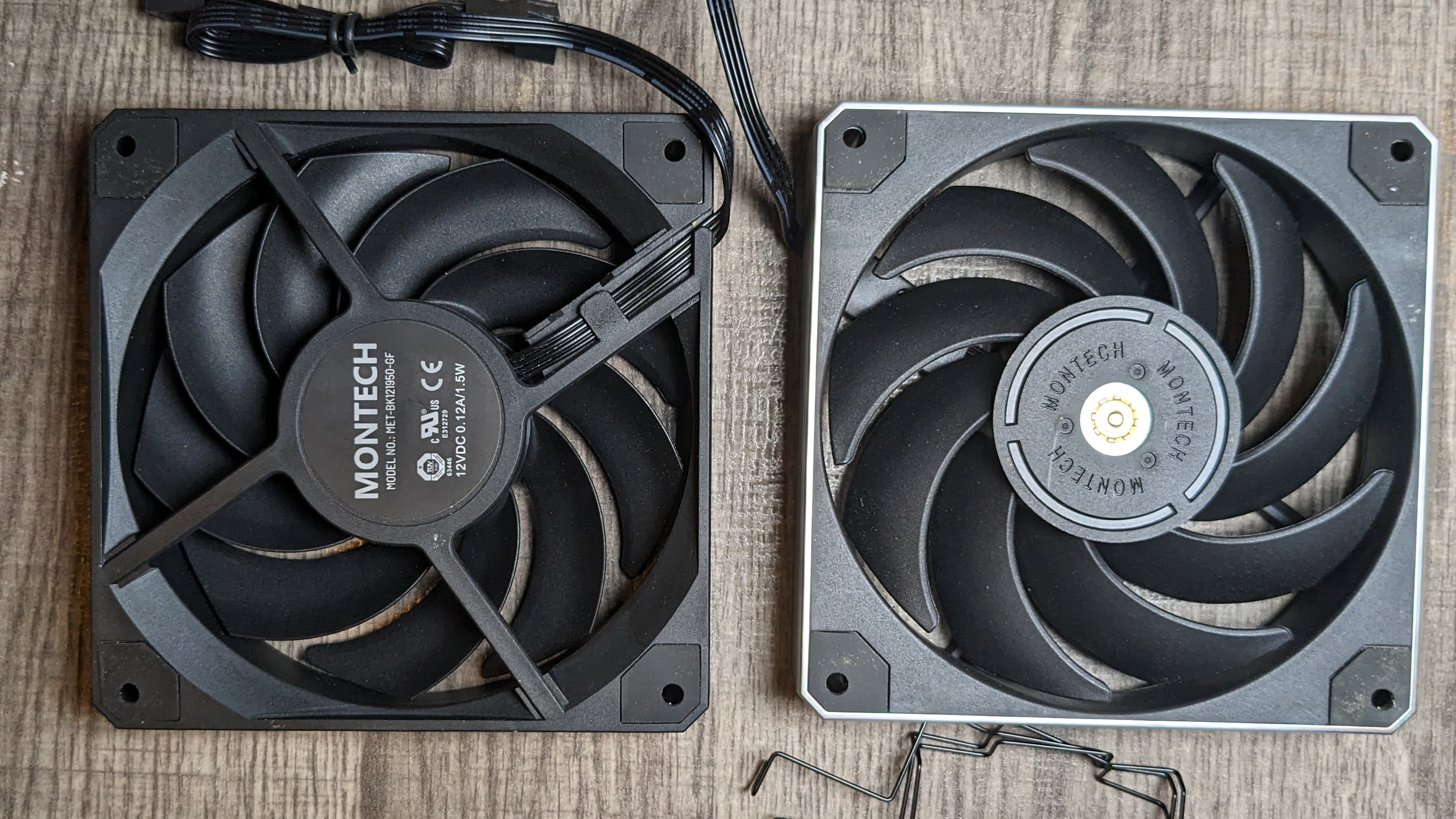
| model | Metal 120 PWM |
| size | 120×120×25mm |
| fan rotation speed | 800~1950RPM±10% |
| air flow | 69 CFM (maximum) |
| air pressure | 2.82mm H₂O |
| Bearing type | Hydrodynamic bearing (HDB) |
| motor | 6 pole fan motor |
| lifespan | 40,000 |
Installation on LGA1700 and AMD AM4 AM5
Montech says user-friendly installation is one of the goals of the Metal DT24 Premium. Instead of using plastic brackets, it uses an all-metal design for a durable, long-lasting product.
1. If you are running an AMD Ryzen system, you should start by removing the default retention bracket. Intel users need to attach the backplate to the motherboard.
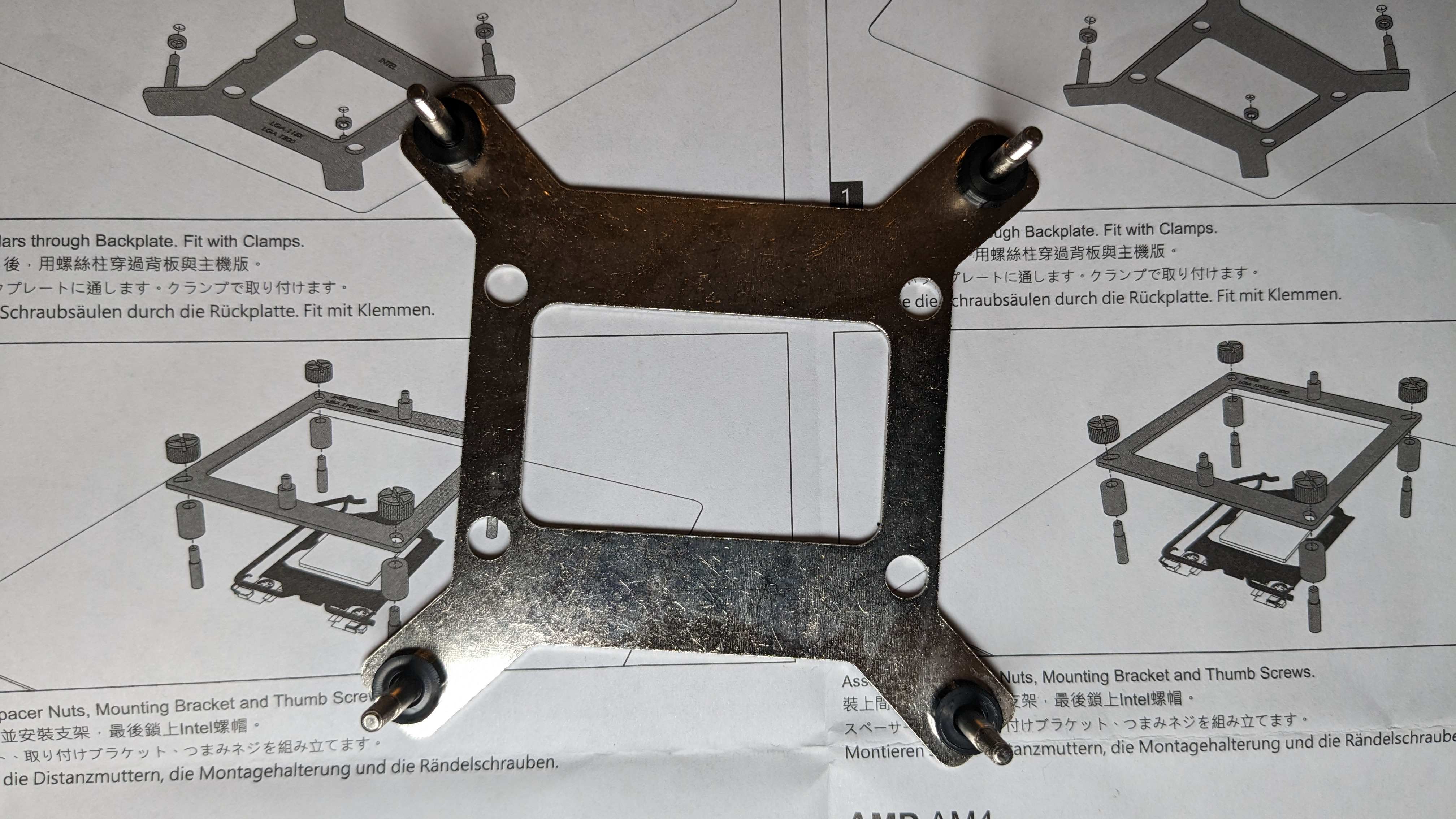
2. AMD users must fasten the mounting studs over the standoffs. Intel users slide the standoffs over the backplate studs.
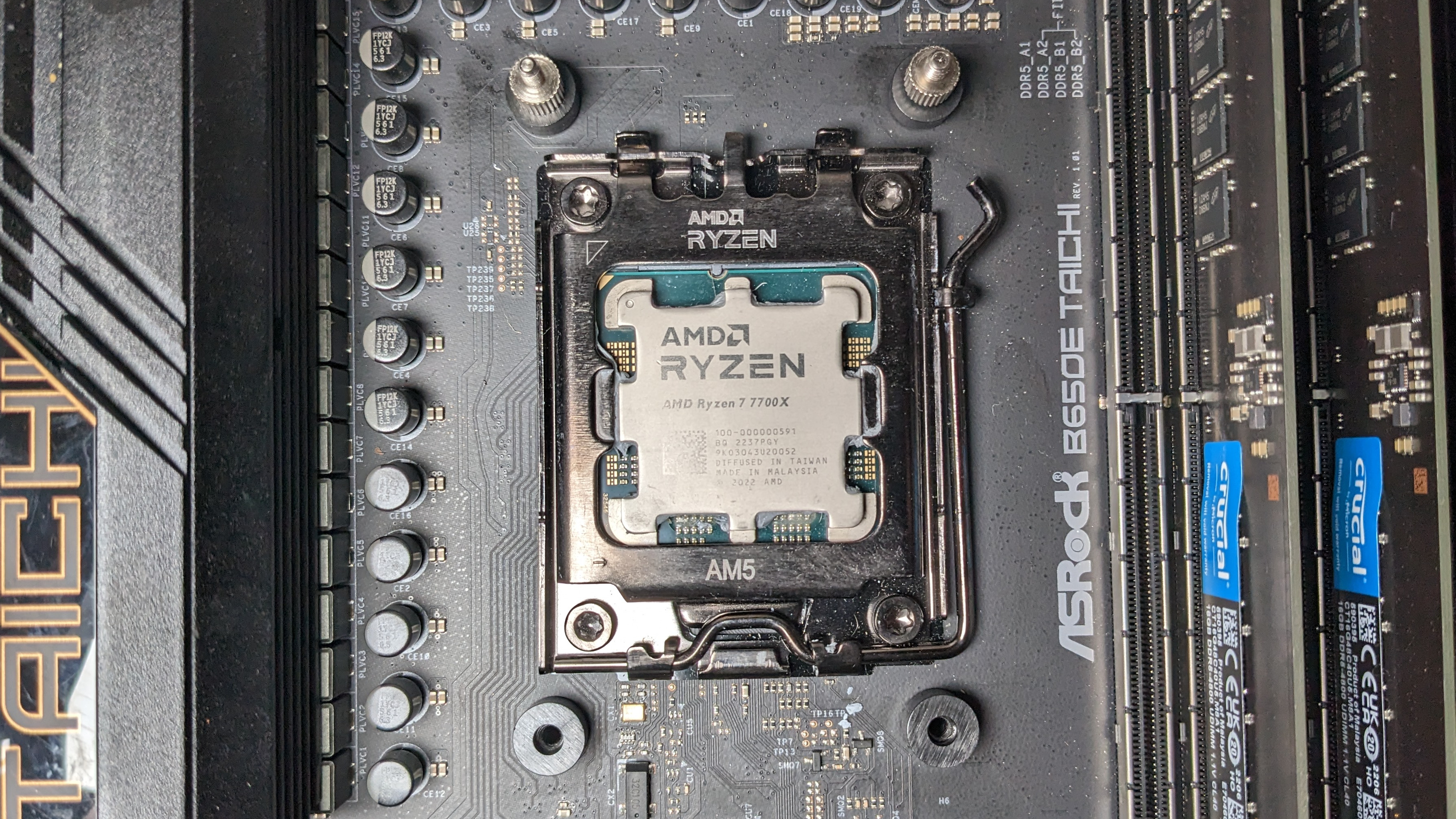
3. Place the mounting bar over the standoffs and secure with the included thumbscrews.
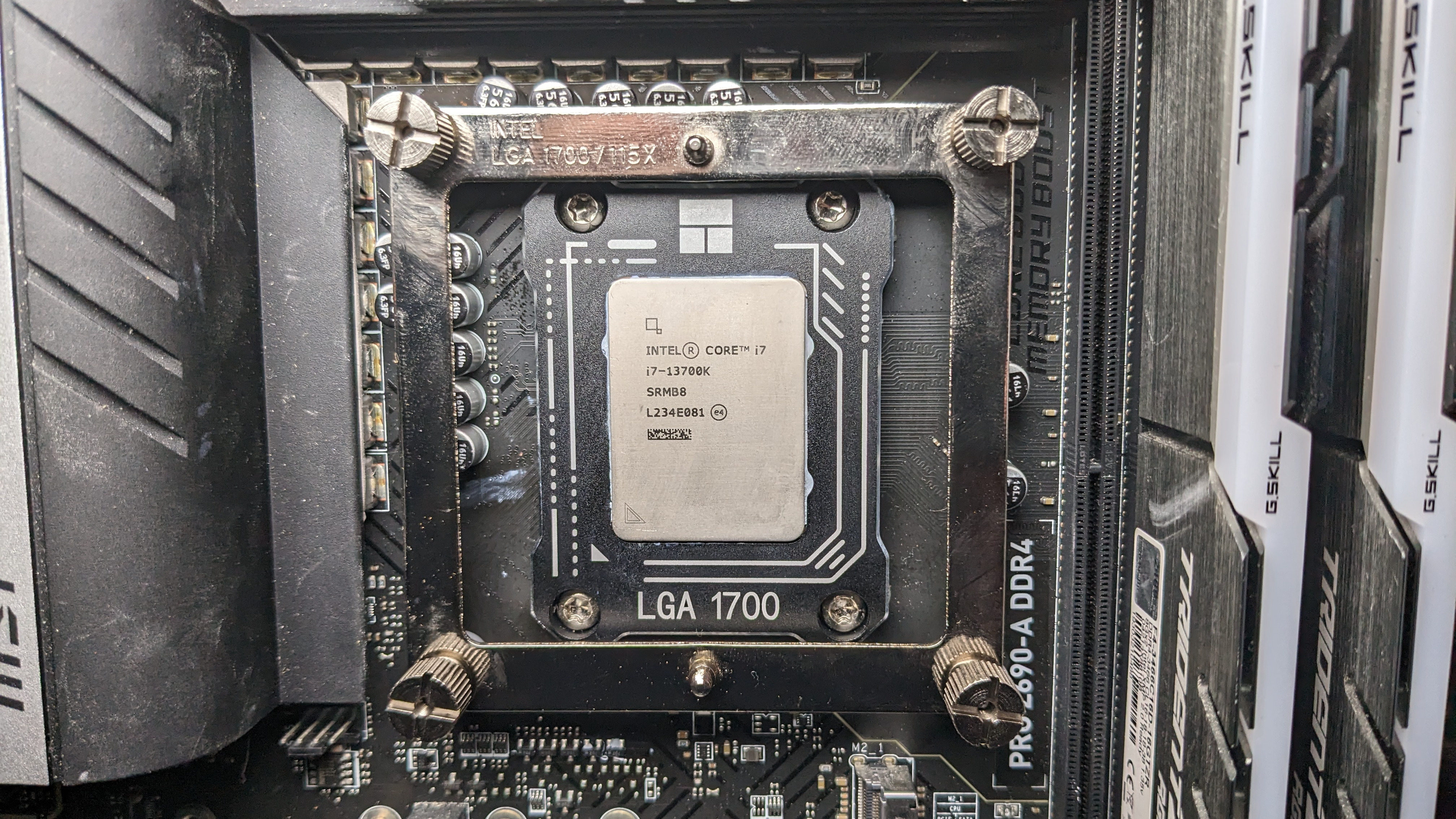
4. Slide the heatsink onto the mounting bracket and secure it using a screwdriver.
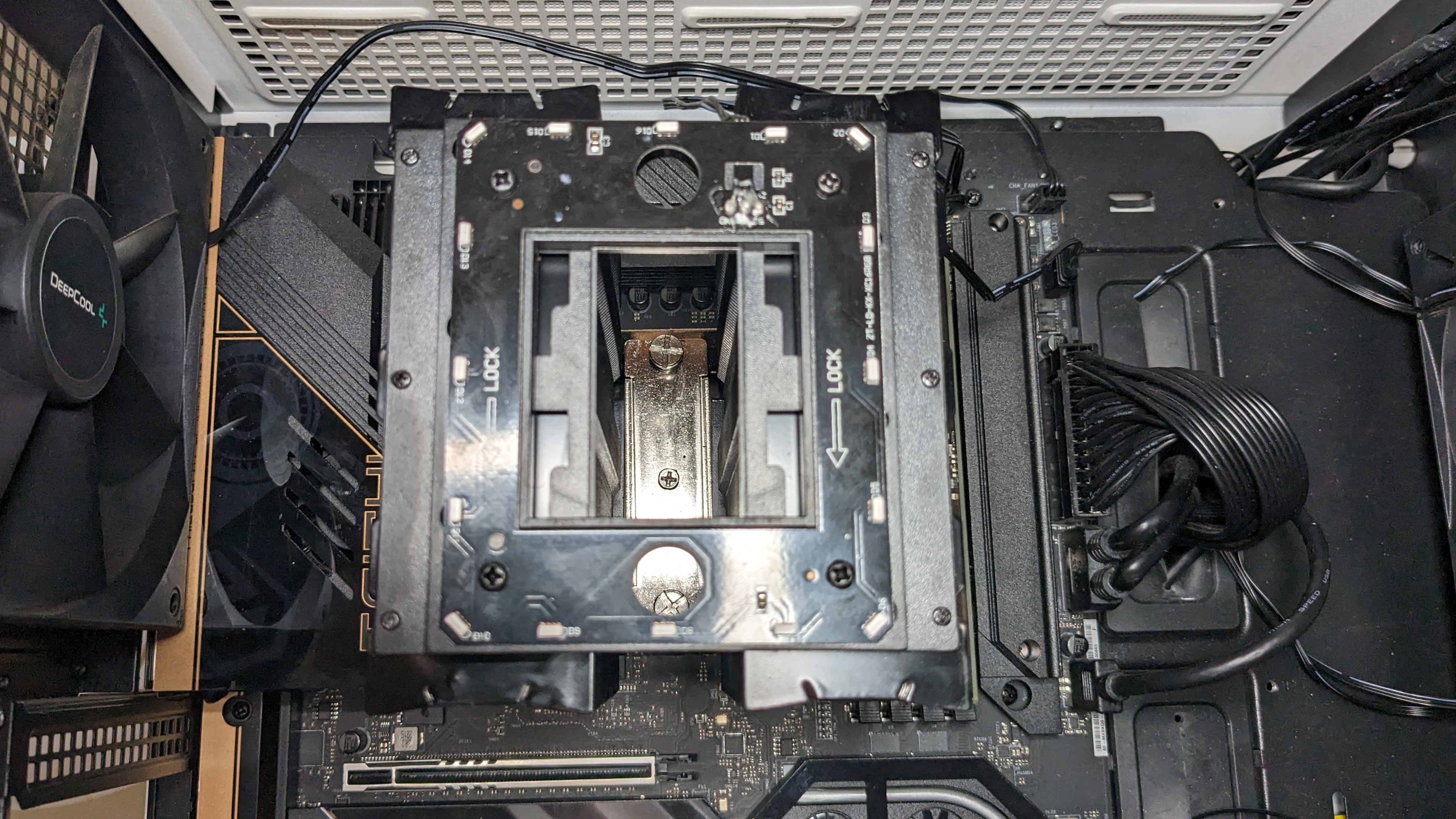
5. Attach the fan to the heatsink using the provided clips and connect it to the motherboard’s PWM controller.
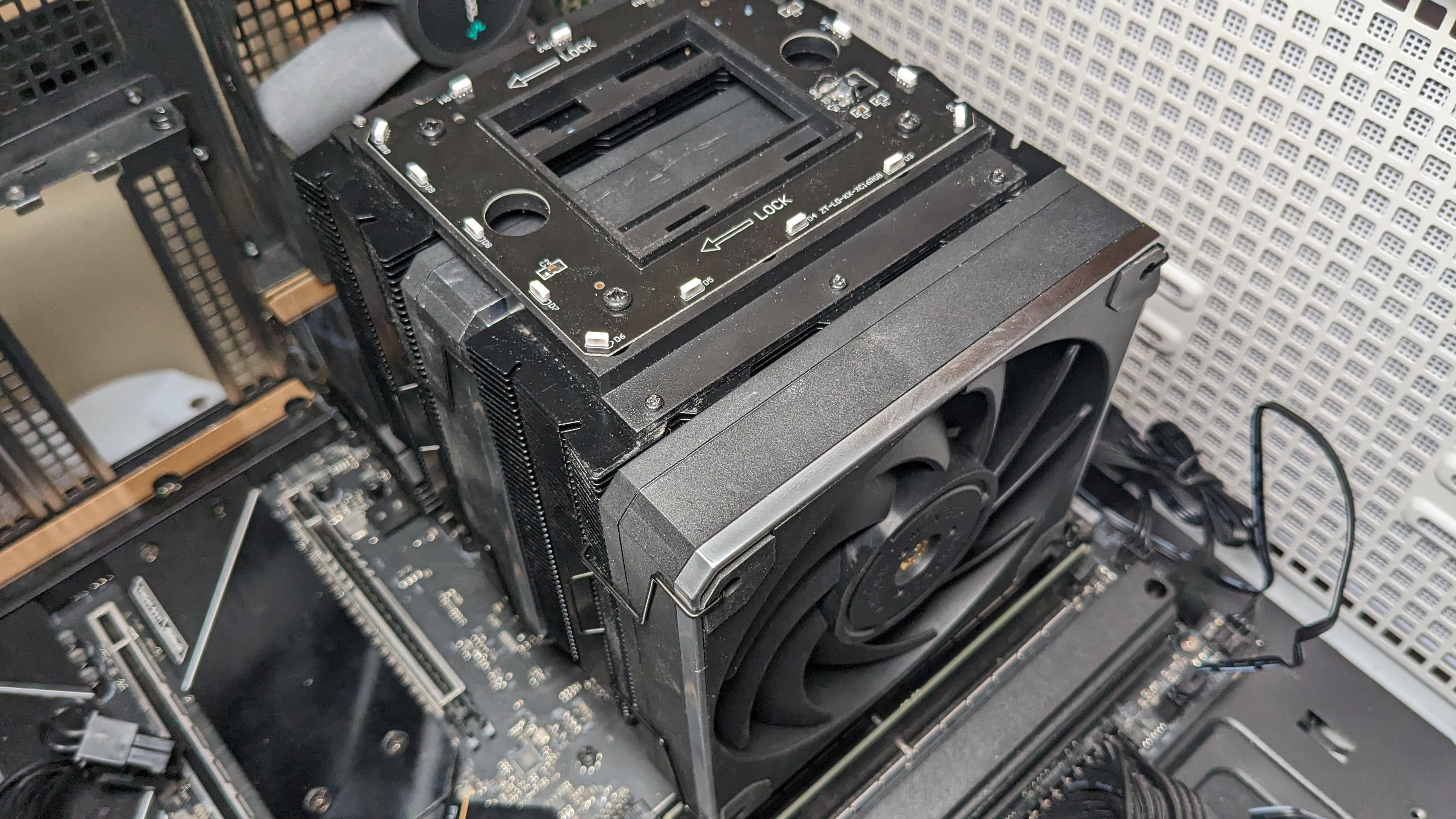
6. Slide the cover onto the top of the unit and connect the ARGB headers.
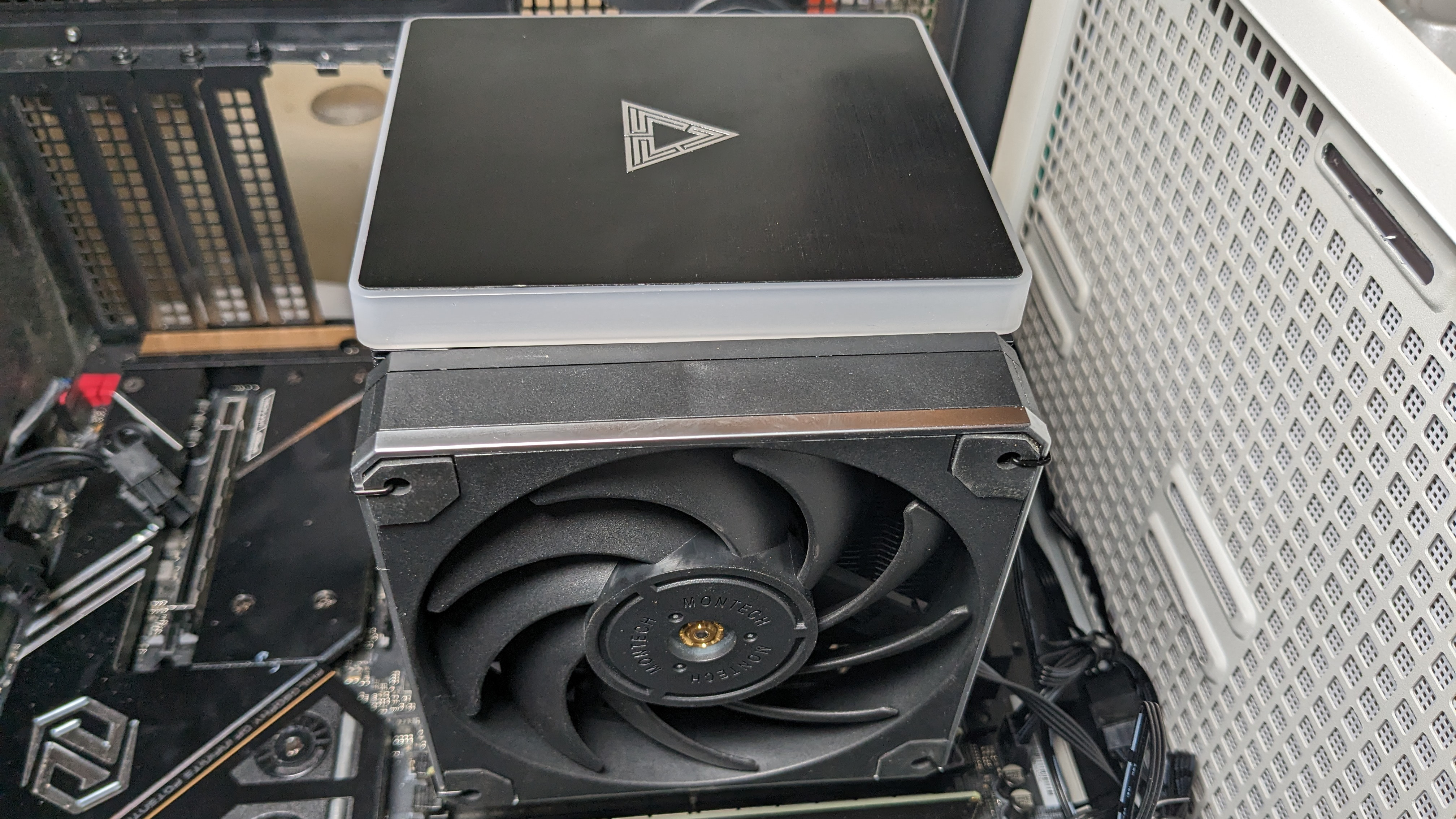
cooling context
cooling context
Modern CPUs, whether Intel or AMD, have difficulty cooling intensive workloads. Previously on desktop CPUs he reaching 95C+ might have been cause for concern, but today’s high-end processors consider it normal behavior. Similar behavior has existed in laptops for years due to cooling limitations in tight spaces.
Since last fall, Tom’s Hardware has been providing cooling reviews with Intel’s flagship i9-13900K, one of the most power hungry desktop CPUs on the market. To give you an idea of what it takes to cool the Intel behemoth, we’ve tested it with a range of coolers, from basic low-end air coolers to: Amazon Basic CPU Cooler Up to high end 420mm AIO such as Corsair iCUE H170i Elite.
It’s nice to see how Intel’s flagship reacts to different levels of cooling, but the results don’t necessarily correlate with lower tier CPUs. In today’s review, we’ll cover two of his more commonly purchased CPUs by end-users: AMD’s Ryzen 7 7700X and Intel’s Core i7-13700K.
Bending the LGA1700 socket
Keep in mind that besides the CPU cooler, there are many other factors that can affect cooling performance, such as the case you use and the fans attached to it. Your system’s motherboard can also affect this. especially, suffer from bendingThe result is poor contact between the cooler and the CPU.
To prevent bending from affecting cooling results, Thermalright LGA 1700 contact frame to our test equipment. If the motherboard is subjected to bending, the thermal results will be worse than those shown below. Not all motherboards are affected by this issue. We tested the Raptor Lake CPUs on two motherboards. And in one of them Thermalright his LGA1700 contacts after installing his frame saw a significant temp improvement but no longer in his 1 motherboard i see no difference in temperature at all I did.check out contact frame reviews for more information.
test method
All tests are performed at an ambient temperature of 23°C. Multiple thermal tests are run on each CPU to test the cooler in different conditions, and acoustic measurements are made on each result. These tests include:
1. Noise normalization test at low noise level
2. “Out of the box”/default configuration thermal and acoustic testing.
a.) This means that Intel’s i7-13700K has no power cap and AMD’s Ryzen 7 7700X has no AMD’s default power cap.
b.) Since the CPU hits Tjmax in this scenario, the best way to compare cooling intensity is to record the total power consumption of the CPU package.
3. Thermal and acoustic testing in power-limited scenarios.
a.) Ryzen 7 7700X tested with 95 W and 75 W limits applied.
b.) Intel’s i7-13700K tested with 175 W and 125 W limits applied.
Thermal results included are from a 10 minute test run. To make sure this was long enough to strain the cooler, I ran both Thermalright’s Assassin X 120 R SE and DeepCool’s LT720 with Intel’s i9-13900K for 10 and 30 minutes. 30 minute Cinebench test. The results did not change at all for longer tests. The sustained average clock speed dropped by 29 MHz for DeepCool’s LT720 and 31 MHz for Thermalright’s Assassin X 120 R SE. This is an incredibly small 0.6% difference in sustained clock speeds, a difference within the margin of error, and a 10 minute test is long enough to actually test the cooler properly. I know there is.
Test configuration – Intel LGA1700 platform
| CPU | Intel Core i7-13700K |
| tested cooler | be quiet! dark rock pro 4 |
| Cooler Master Master Air MA824 Stealth | |
| cooler master hyper 622 halo | |
| Cooler Master Master Liquid Core 360L | |
| Cougar Forza 85 Essential | |
| Deep Cool Assassin IV | |
| Deep Cool LT720 | |
| Jiu Shark JF13K Diamond | |
| Thermal Light Silver Soul 135 | |
| Thermal Light Peerless Assassin | |
| Montec D24 Premium | |
| MSI Core Liquid MEG S360 | |
| Noctua NH-D15S | |
| motherboard | MSI Z690A Pro DDR4 |
| GPUs | Intel ARC A770 LE |
| case | be quiet! Silent Base 802, system fan set to speed 1 setting. |
| monitor | LG45GR95QE |
| Power supply unit | Cooler Master XG Plus 850 Platinum PSU |
Test Configuration – AMD AM5 Platform
| CPU | AMD Ryzen 7 7700X |
| tested air cooler | be quiet! dark rock pro 4 |
| Cooler Master Master Air MA824 Stealth | |
| cooler master hyper 622 halo | |
| Cougar Forza 85 Essential | |
| Deep Cool Assassin IV | |
| Jiu Shark JF13K Diamond | |
| Thermal Light Silver Soul 135 | |
| Thermal Light Peerless Assassin | |
| Montec D24 Premium | |
| Noctua NH-D15S | |
| motherboard | ASRock B650E Taichi |
| GPUs | Intel ARC A770 LE |
| case | Deep Cool CK560WH |
| monitor | LG45GR95QE |
| Power supply unit | Deep Cool PQ1000M |





